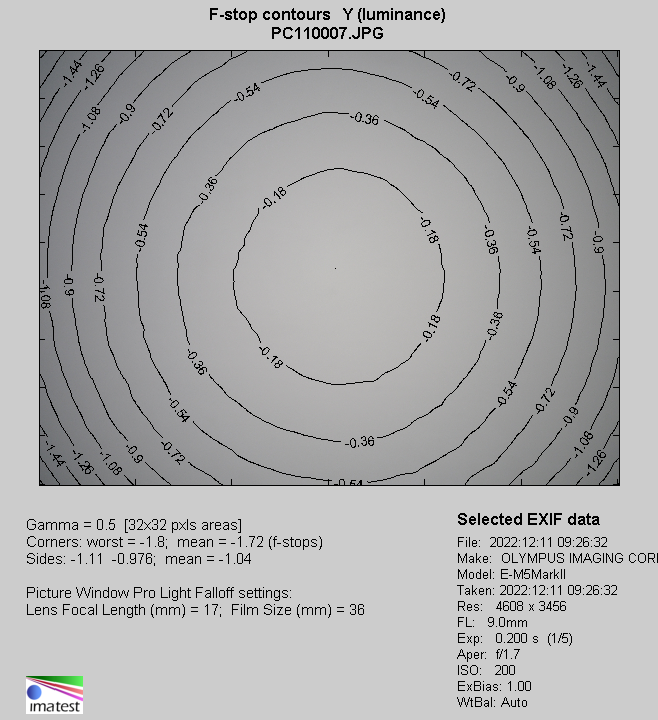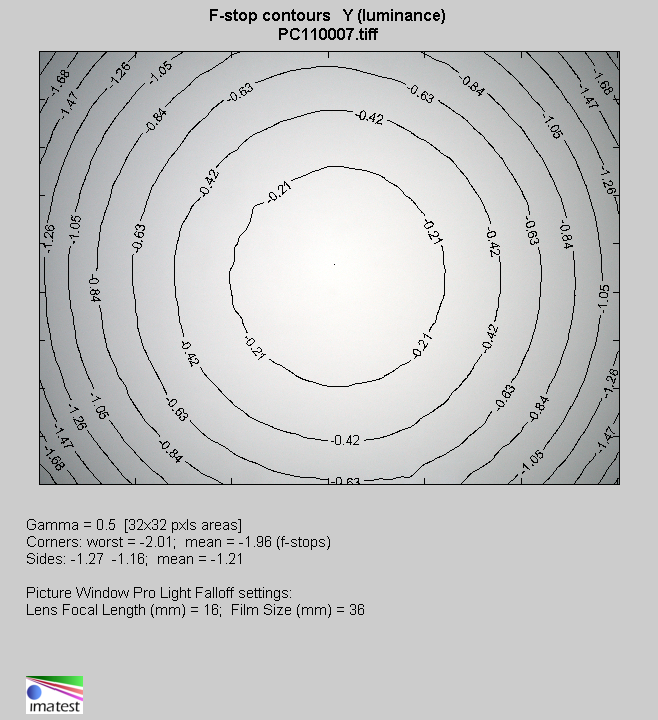Panasonic Leica DG Summilux 9 mm f/1.7 ASPH
8. Vignetting
| Olympus E-M5 II, JPEG, f/1.7 | Olympus E-M5 II, JPEG, f/2.0 |

|

|
| Olympus E-M5 II, JPEG, f/2.8 | Olympus E-M5 II, JPEG, f/4.0 |

|

|
At the maximum relative aperture brightness loss in frame corners amounts to 45% (−1.72 EV). It is a lot but, taking into account the f/1.7 aperture and the angle of view of this lens, it's still something that allows the tested PanaLeica to stick out in a positive way. It's also obviously one of advantages stemming from a smaller detector.
Please Support UsIf you enjoy our reviews and articles, and you want us to continue our work please, support our website by donating through PayPal. The funds are going to be used for paying our editorial team, renting servers, and equipping our testing studio; only that way we will be able to continue providing you interesting content for free. |
- - - - - - - - - - - - - - - - - - - - - - - - - - - - - - - - - - - - - - - - - - - - - - - -
Stopping down the aperture to f/2.0 makes vignetting decrease to 36% (−1.28 EV), and when you apply f/2.8 the aberration drops to 26% (−0.63 EV). An even lower level, amounting to just 21% (−0.69 EV), you see by f/4.0, and by f/5.6 brightness loss decreases to 18% (-0.56 EV). Further stopping down of the aperture decreases light fall-off by just 1%.
As you pass from RAW to JPEG format images are significantly cropped in order to correct high level of barrel distortion. Such an operation also influences vignetting measurement. Let's check the level of this aberration for uncorrected RAW files.
| Olympus E-M5 II, RAW, f/1.7 | Olympus E-M5 II, RAW, f/2.0 |

|

|
| Olympus E-M5 II, RAW, f/2.8 | Olympus E-M5 II, RAW, f/4.0 |

|

|
At the maximum relative aperture vignetting is 49% (-1.96 EV), by four percentage points higher than in case of JPEG files. By f/2.0 the difference is even greater as this aberration amounts to 43% (-1.63 EV). By f/2.8, f/4.0, and f/5.6, we got, respectively: 34% (-1.21 EV), 31% (-1.07 EV), and 26% (-0.86 EV). By f/8.0 you see another slight decrease of vignetting as this aberration amounts to 24% (-0.80 EV).
| Olympus OM-D E-M5 Mark II, JPEG, f/1.7 |
 |
| Olympus OM-D E-M5 Mark II, RAW, f/1.7 |
 |






